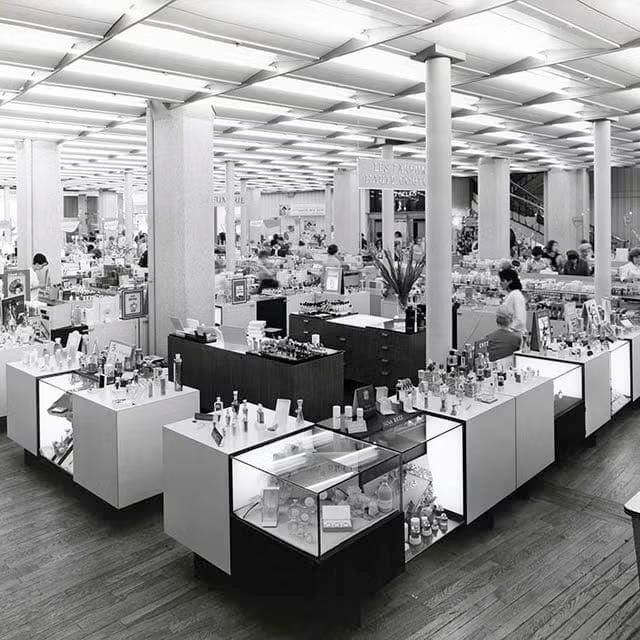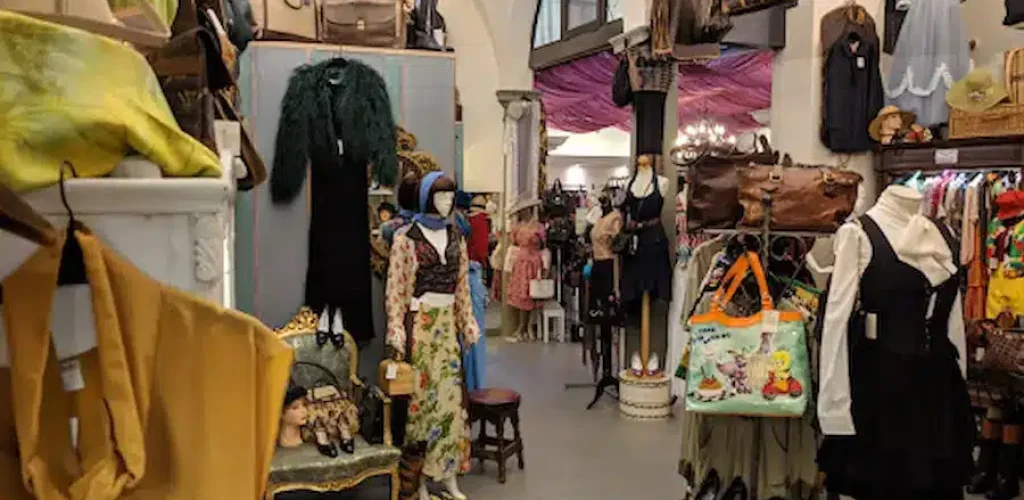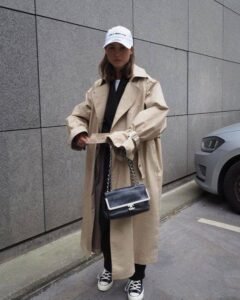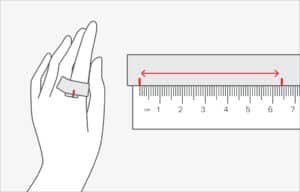✨ the fashion store as sacred space
Walking into a boutique used to be a moment.
Not just shopping — a ritual. A ceremony of fabrics, silhouettes, and identity.
A space choreographed like a stage set, where every spotlight, hanger, and fragrance whispered seduction.
In a world of same-day delivery and checkout buttons, some of us still crave the slowness, the human scale, the tactile luxury of stepping through a boutique door and being seen.
📜 the beginning: fabrics, markets, and hands that choose
Before the brands, before the windows and logos — there were hands.
Fingers running across silk in the markets of Cairo. Voices echoing through the alleys of Athens.
In ancient China and 17th-century Edo (now Tokyo), we already saw the first iterations of fashion retail: kimono shops evolving into structured shopping venues.
Fashion, then, was alive. It had weight, texture, and a voice.
🏛️ 19th century: the birth of modern retail
The revolution takes shape in Paris and London.
In 1796, Harding, Howell & Co. opens in London, targeting fashionable women with a curated offer.
But it’s in 1852 that Aristide Boucicaut transforms the Parisian Bon Marché into something radically new:
- fixed prices
- window displays
- return policies
- access for all
- ready-to-wear garments for women
Other pioneers followed: Printemps (1865), La Samaritaine (1869), and Galeries Lafayette (1895) — opening shopping to the masses and introducing catalogs, sales, and editorial-style advertising.
🇮🇹 Italy joins in: Rinascente, Bocconi, UPIM
By the late 19th century, Italy sees its first department stores.
The Bocconi brothers launch Alle città d’Italia, then UPIM and STANDA enter the scene, democratizing fashion across the country.
In the postwar years, La Rinascente becomes more than a store: it’s a stage for Italian fashion, hosting runway shows and promoting local design.
🖼️ Boutique culture: intimacy, craftsmanship, identity
While department stores spoke to the crowd, boutiques whispered to the individual.
Elegant, curated, often artisanal, these spaces were about relationship — between maker and wearer, between fashion and desire.
In 1960s London, this idea exploded with the rise of the concept store:
- Mary Quant’s Bazaar
- Barbara Hulanicki’s BIBA
Not just stores, but immersive environments where clothes met music, art, and atmosphere.
🧪 1990s: retail becomes aesthetic experience
The term concept store was coined in the ’90s, but the vibe had arrived decades earlier.
Retail was no longer about stock, but about storytelling.
Stores like ADSB Andersson Bell in Seoul prove that design, emotion, and brand identity can live under the same roof.
The store becomes a gallery. Every detail — light, scent, soundtrack — speaks a language of style.
🌐 Evolution of fashion stores
Enter the 2000s:
E-commerce explodes. Amazon, ASOS, Zalando redefine buying habits.
But physical shops don’t vanish — they evolve.
The store becomes a stage once again.

🏛️ Milan 2025: Shopology and the immersive archive
During the Design Week, Palazzo Isimbardi hosted Shopology, curated by Ramdane Touhami — a sensorial, historical walk through 2,000 years of retail.
- Archival sketches
- Vintage video
- Talks with designers, anthropologists, and cultural critics
It wasn’t just a show. It was a meditation on how shopping has always been about identity.
⏳ why walking into a store still matters
In a world that celebrates speed and disconnection, stepping into a boutique is an act of resistance.
You pause. You breathe. You try something on. You ask for advice. You’re seen.
It’s not just about what you buy.
It’s about how you buy — and who you are in that moment.
🪞 every purchase is autobiography
Next time you walk past a boutique window, remember:
You’re not just looking at clothes. You’re reading a chapter of someone’s story — maybe even your own.
Because every boutique is a mirror.
And every outfit, a sentence in your sartorial memoir.







